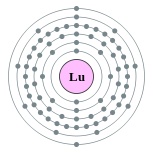Iron
Janet Kuypers

from the “ Periodic Table of Poetry” series
Grabbing the wrought Iron railing
as I walked toward the kitchen,
I first put away the Iron and Ironing board…
But the television blaring from in the den
stopped me in my tracks. As I walked,
the Japanese TV voice asked “scusah”
before the English translation started.
Going to the den I saw him and asked,
“Excuse me, scusah, Iron Chef is on?”
‘Cause although those shows are insanely old,
it’s fun to watch the Japanese food show
for vegetarian meal ideas. “Yeah,
got any ideas for dinner?” he responded,
and I walked to the stainless steel fridge
to look at our food for ideas, and saw
his Iron skillets cleaned on the stove
above the stainless steel oven. Then I
glanced at the stainless steel dish washer
and the stainless steel bowls on the counter.
Knowing that Iron forms stainless steel,
I thought of all of the iron in our home:
Makes sense, since Iron is so abundant
on this planet, from it’s outer crust
to the Earth’s rocky core. Even reactions
of high-mass stars produced Iron,
making it such a vital part of this planet.
So it makes sense I’d see it everywhere
in my own home, from my furniture to
my appliances… From lighting to lanterns,
from tables to chairs to even our wall clock.
It’s in the fireplace grating, and it’s even in
the abstract wall art. Hmmm, and how extensive
is my Iron candle holder collection…
A few of those older candle holders even
have rust, because the Iron oxidized.
The Iron Age brought historical advances
in everything from weaponry to introducing
curvilinear and flowing decoration designs.
Iron is so abundant on this planet,
and since Iron is even so needed
inside the human body,
I’ve even been taking Iron supplements
to make sure I never run low.
And from the micro to the macro,
since I love astronomy so:
with high-mass stars producing Iron,
scientists even believe that because
of the existence of Iron in the formation
of our solar system, an Iron isotope
energy release may have led to
the differentiation of asteroids
after their formation four
point six billion years ago.
So from the creation of our solar system
to the insides of our bodies,
it makes sense why we humans
have such an Iron will,
with such a metallic element
coursing through our veins.
I finally walked back to the den
with a few pumpkin seeds to snack on.
“We can have a spinach salad,
but I started cooking lentils for beans.
If you want to use the steel wok,
Let’s cook Tempeh and add artichokes,
unless you want to use broccoli.”
Since I had Iron on my mind,
I had to pick the most iron-rich
foods we had, before I added,
“And what spices are they using
on Iron Chef? We can come up
with a really good meal tonight
if we play our cards right…”





